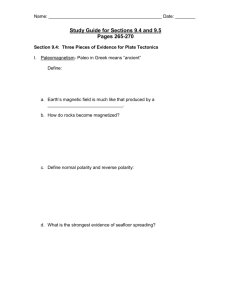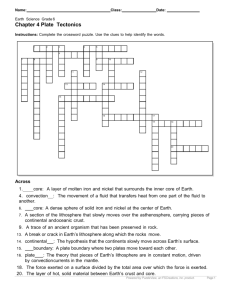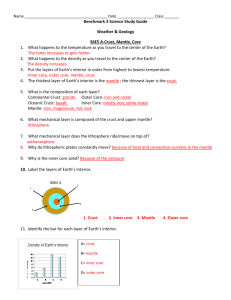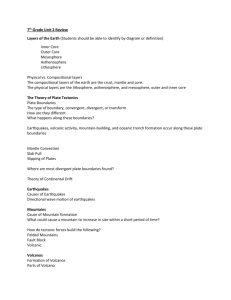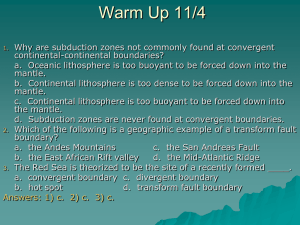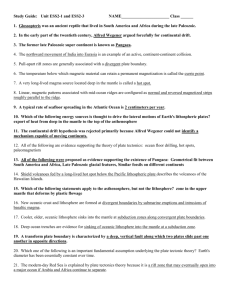9.4_9.5_fullnotes
advertisement
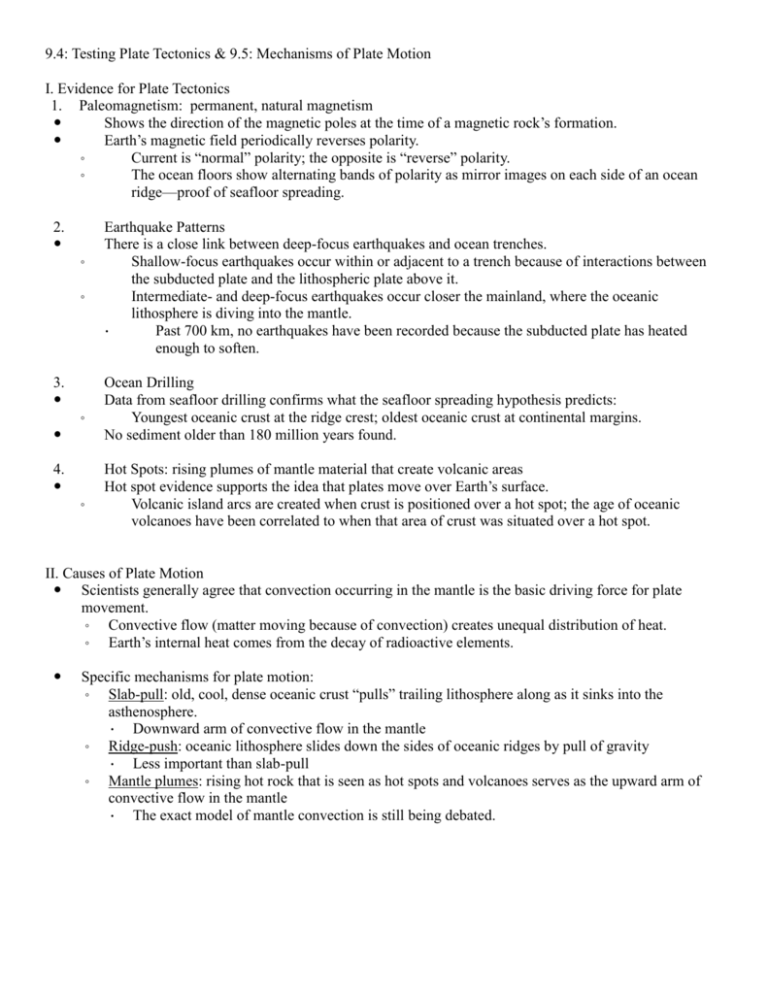
9.4: Testing Plate Tectonics & 9.5: Mechanisms of Plate Motion I. Evidence for Plate Tectonics 1. Paleomagnetism: permanent, natural magnetism Shows the direction of the magnetic poles at the time of a magnetic rock’s formation. Earth’s magnetic field periodically reverses polarity. ◦ Current is “normal” polarity; the opposite is “reverse” polarity. ◦ The ocean floors show alternating bands of polarity as mirror images on each side of an ocean ridge—proof of seafloor spreading. 2. ◦ ◦ 3. ◦ 4. ◦ Earthquake Patterns There is a close link between deep-focus earthquakes and ocean trenches. Shallow-focus earthquakes occur within or adjacent to a trench because of interactions between the subducted plate and the lithospheric plate above it. Intermediate- and deep-focus earthquakes occur closer the mainland, where the oceanic lithosphere is diving into the mantle. Past 700 km, no earthquakes have been recorded because the subducted plate has heated enough to soften. Ocean Drilling Data from seafloor drilling confirms what the seafloor spreading hypothesis predicts: Youngest oceanic crust at the ridge crest; oldest oceanic crust at continental margins. No sediment older than 180 million years found. Hot Spots: rising plumes of mantle material that create volcanic areas Hot spot evidence supports the idea that plates move over Earth’s surface. Volcanic island arcs are created when crust is positioned over a hot spot; the age of oceanic volcanoes have been correlated to when that area of crust was situated over a hot spot. II. Causes of Plate Motion Scientists generally agree that convection occurring in the mantle is the basic driving force for plate movement. ◦ Convective flow (matter moving because of convection) creates unequal distribution of heat. ◦ Earth’s internal heat comes from the decay of radioactive elements. Specific mechanisms for plate motion: ◦ Slab-pull: old, cool, dense oceanic crust “pulls” trailing lithosphere along as it sinks into the asthenosphere. Downward arm of convective flow in the mantle ◦ Ridge-push: oceanic lithosphere slides down the sides of oceanic ridges by pull of gravity Less important than slab-pull ◦ Mantle plumes: rising hot rock that is seen as hot spots and volcanoes serves as the upward arm of convective flow in the mantle The exact model of mantle convection is still being debated.
